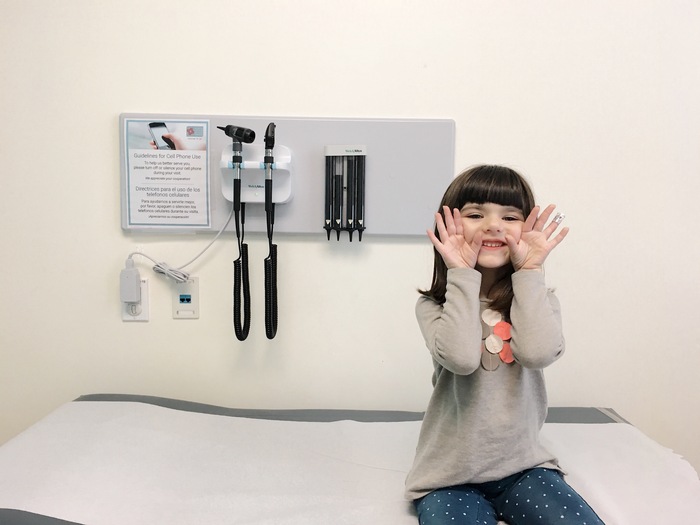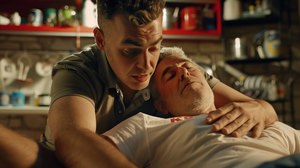Key points
- Urgent care centers can treat common children's issues like strep throat, ear infections, broken bones, colds, the flu, and minor cuts and burns.
- Pediatric urgent care centers have staff and resources specifically trained and equipped to treat children's health issues.
- Urgent care is a cost-effective and quicker alternative to emergency rooms for non-life-threatening conditions.
- Not all adult urgent care centers treat children, so it's important to confirm before bringing your child in.
- Pediatric urgent care centers offer a great alternative to emergency rooms and regular pediatrician appointments. They are less costly, less time-consuming, and patients can often be seen much faster, especially when appointments are booked online.

Kids get sick. Especially once they start school and their immune systems are bombarded with the germs of other children, it may seem as though your little one is coming down with something more often than they used to. This isn’t necessarily bad, though. As children are exposed to different germs and microorganisms, their bodies learn to stave off infection. The more new bacteria they are exposed to, the stronger their immune systems get.
Still, when your little one is sick or injured, all you want is for them to feel better. Good news: when your child gets sent home with a cough or gets hurt at the playground, you don’t have to head to the emergency room or wait for their pediatrician to be available. You can head to urgent care — where your child will get relief a whole lot faster, at a fraction of the cost.
Keep reading for an overview of common children’s issues that can be treated at urgent care, the difference between adult and pediatric urgent care, as well as a primer on when to go to walk-in clinic versus the ER.
What common children’s issues can be treated at urgent care?
For acute but non-life-threatening illnesses or injuries, urgent care is often the best place for your child to receive care. Below are some of the most common children’s issues that can be treated quickly at urgent care.
Strep Throat
There are more than 3 million cases of strep throat — a bacterial infection that causes a sore, scratchy throat — each year. It’s quite probable that your child will contract a case at some point. Not to worry, though. You can visit urgent care for a strep test to confirm that the sore throat is strep. If it is, your child will likely be prescribed antibiotics, which will help ease their discomfort while fighting the infection.
Ear Infections
Another ear-nose-throat (ENT) disorder that can be treated at urgent care is the common ear infection. Since they are most common in infants and toddlers who may not be able to tell you how they’re feeling, you may have to be on the lookout for symptoms like fussiness, tugging at the ears, and fever. Antibiotics are usually prescribed for ear infections, which are usually bacterial.
Broken Bones and Sprains
A broken bone is a big deal and can be scary for you and your child. Fortunately, most urgent care centers have the resources needed to x-ray, set, and cast broken bones (and sprains). The only exceptions to this are if the broken bone has pierced the skin or if you think your child’s neck or back may be broken. For these situations, you’ll want to head to call 911 — moving someone with a broken neck or back can be very dangerous.
Common Colds
Common colds are caused by viruses that spread through the air and through direct contact with a contagious person. These happen most often during cold or rainy seasons but can happen at any time. Children can catch as many as 12 colds per year — that’s a lot of coughing and sneezing!
There’s not much a doctor can do for the common cold; you usually just have to let them run their course. However, the Centers for Disease Control (CDC) recommends that you see a doctor if your child has:
- a temperature higher than 100.4° F
- symptoms that last more than 10 days
- symptoms that are severe or unusual
To protect other children from getting sick and your child from becoming sicker you’ll want to make sure they stay home from school until they no longer have symptoms.
The Flu
Though doctors can’t typically provide treatment for the flu, if your child becomes dehydrated or unable to keep fluids down, a visit to urgent care can help. They’ll probably receive an IV of fluid to help rehydrate them. Prevention is the best protection — it’s a good idea to get a flu shot for your child (and yourself).
Hand-Foot-Mouth Disease
Also known as HFMD, hand-foot-mouth disease is caused by a virus. It is characterized by ulcers or sores, and a rash or blisters, on the mouth, hands, feet, and legs. While this isn’t exactly pleasant, it’s also not serious and should clear up on its own within 7-10 days. If your child is really uncomfortable or has more serious symptoms, they can be seen by a pediatrician at urgent care.
Pink Eye
Pink eye, or conjunctivitis, can be caused by allergies or by bacterial or viral infection. On your own, you probably won’t be able to tell what caused it. Since pink eye is highly contagious, it’s a good idea to take your child to urgent care as soon as you notice symptoms. If the infection is bacterial, your child may be prescribed antibiotic eye drops. Allergic conjunctivitis is usually treated with antihistamines, while viral conjunctivitis is left to run its course.
Allergic Reactions
Didn’t know your kiddo was allergic to peanuts? Or wasps? Or shellfish? Don’t worry — it happens. Actually, sometimes allergies can form later in life, so something that was ok a couple years ago could very well cause an allergic reaction now. Unless your child is having trouble breathing, urgent care is a good place to seek care for allergy-related symptoms.
Pneumonia
Since pneumonia can go from mild to very serious rather quickly, it’s important to know when you should go to urgent care and when you should go to the ER. At the onset of pneumonia, your child can be seen at urgent care. In fact, the sooner the better. But if their fever worsens, they have shortness of breath or trouble breathing, or if any other symptoms persist, the ER will be able to address these potentially serious symptoms.
Swallowed Objects
As a parent, you know how often the phrase “don’t put that in your mouth!” is said. Despite your best efforts, kids sometimes swallow objects they shouldn’t. As long as they aren’t having trouble breathing, you can take them to urgent care. If they are having trouble breathing, you should take them to the ER or call 911 immediately.
Minor Cuts and Burns
At urgent care, doctors will be able to treat minor, shallow cuts, as well as minor burns. Most of the time, all these issues require is a thorough cleaning and some topical antibiotic cream. They can also provide stitches (if necessary) for small cuts. For deeper cuts, you may want to take your little one to the ER.
What’s the difference between adult urgent care and pediatric urgent care?
Urgent care is a great place for children and adults to receive care for acute, non-emergency illnesses and injuries. While nearly all urgent care centers welcome children, there are some distinct benefits of going to a pediatric urgent care. A few of these benefits include:
- A pediatrician on staff
- Doctors, nurses, and physicians assistants who are specially trained to diagnose and treat children
- The resources and equipment needed to treat common children’s issues
It’s important to point out that not all adult urgent care centers will treat children. It’s a good idea to call or look online to make sure before you bring your child in. When you use Solv to book a same-day urgent care appointment online, you can filter results to only show pediatric centers.
Should I go to the emergency room or pediatric urgent care?
Sometimes it’s a tough call to make — urgent care or the emergency room? When your child is sick, the last thing you want to worry about is where you’re going to seek care. A good rule of thumb is to go to the emergency room if you believe your child has a serious illness. If it’s a life-threatening emergency, call 911. For everything else, urgent care if your best (and most affordable) bet.
When a health issue comes up, waiting to see your child’s normal pediatrician isn’t always possible. But going to the emergency room is expensive, time-consuming, and best reserved for true emergencies.
Thankfully, pediatric urgent care centers are a great option for when your child needs care for an acute, non-emergency condition. Not only does going to urgent care cost less than the ER, you’ll also be seen a lot faster — many patients wait an average of 8 minutes when they book an urgent care appointment online with Solv.
FAQs
What common children's issues can be treated at urgent care?
Urgent care can treat a variety of common issues such as strep throat, ear infections, broken bones, colds, the flu, and minor cuts and burns.
When should I take my child to urgent care instead of an emergency room?
You should take your child to urgent care for non-life-threatening conditions. If your child has a serious illness or life-threatening emergency, you should go to the emergency room or call 911.
What is the difference between adult urgent care and pediatric urgent care?
Pediatric urgent care centers have pediatricians on staff and are equipped with resources specifically for treating children's health issues. Not all adult urgent care centers treat children.
How can I find a pediatric urgent care center?
You can use online resources like Solv to find and book appointments at pediatric urgent care centers.
Is urgent care a good alternative to the emergency room for my child's health issues?
Yes, urgent care is a cost-effective and quicker alternative for non-life-threatening conditions. However, for serious illnesses or emergencies, you should go to the emergency room or call 911.
How can I protect my child from common colds?
To protect your child from common colds, make sure they stay home from school until they no longer have symptoms. If your child has a temperature higher than 100.4° F, symptoms that last more than 10 days, or symptoms that are severe or unusual, you should see a doctor.
What is the usual treatment for pink eye at urgent care?
If the pink eye infection is bacterial, your child may be prescribed antibiotic eye drops. Allergic conjunctivitis is usually treated with antihistamines, while viral conjunctivitis is left to run its course.
How can I find a pediatric urgent care center?
You can use online resources like Solv to book a same-day urgent care appointment and filter results to only show pediatric centers. It's also a good idea to call or look online to make sure a center treats children before you bring your child in.









